![[Shutterstock 283307369 general-triangle-particles] shutterstock_283307369.jpg](https://dam.malvernpanalytical.com/9755395d-9db4-490c-93c3-af12000e8022/shutterstock_283307369_Original%20file.jpg)
Pixels to Particles Webinar Series
In this three-part webinar series, we explore groundbreaking easy-to-use features from Mastersizer 3000+ that elevate your work with unparalleled precision and efficiency.
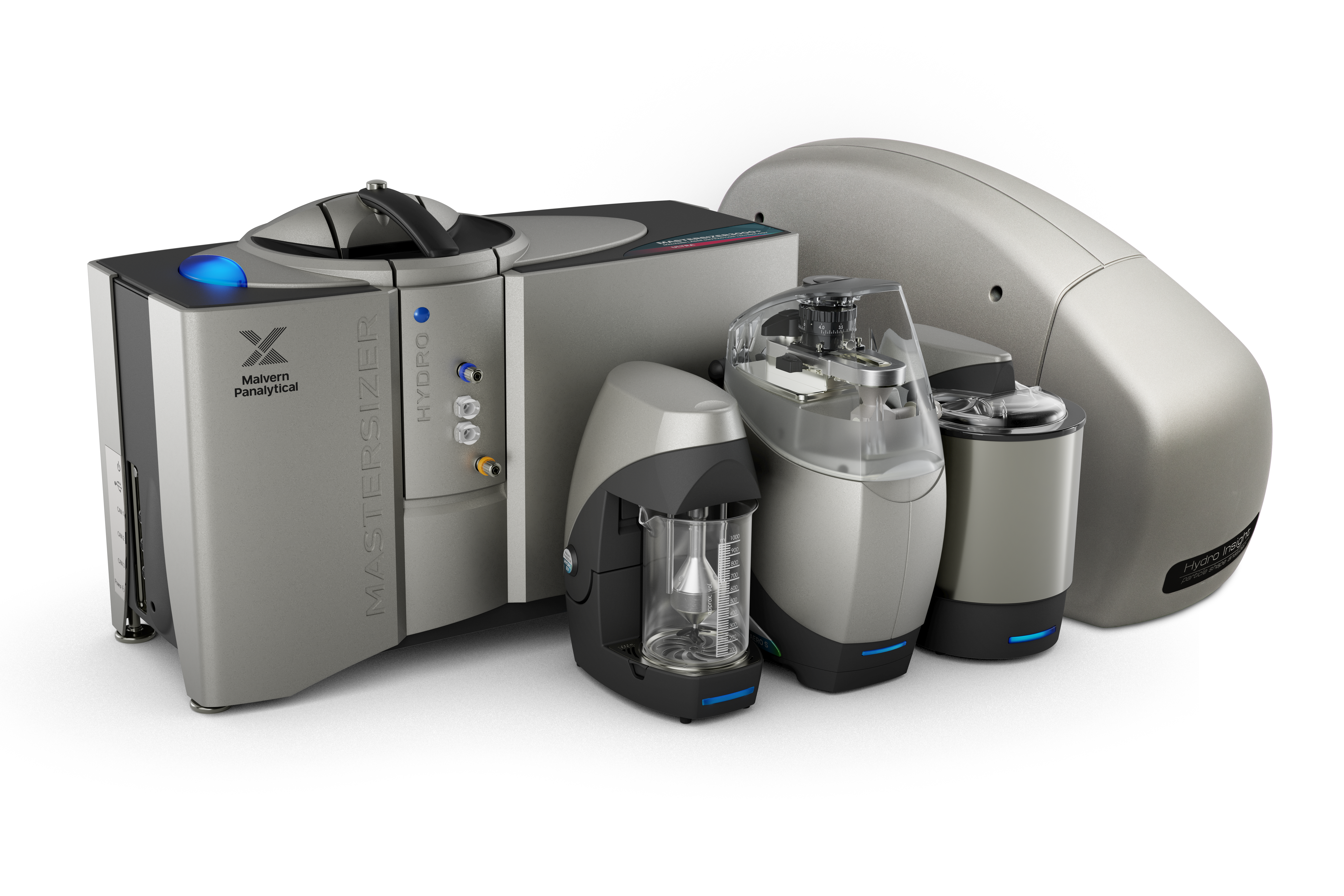
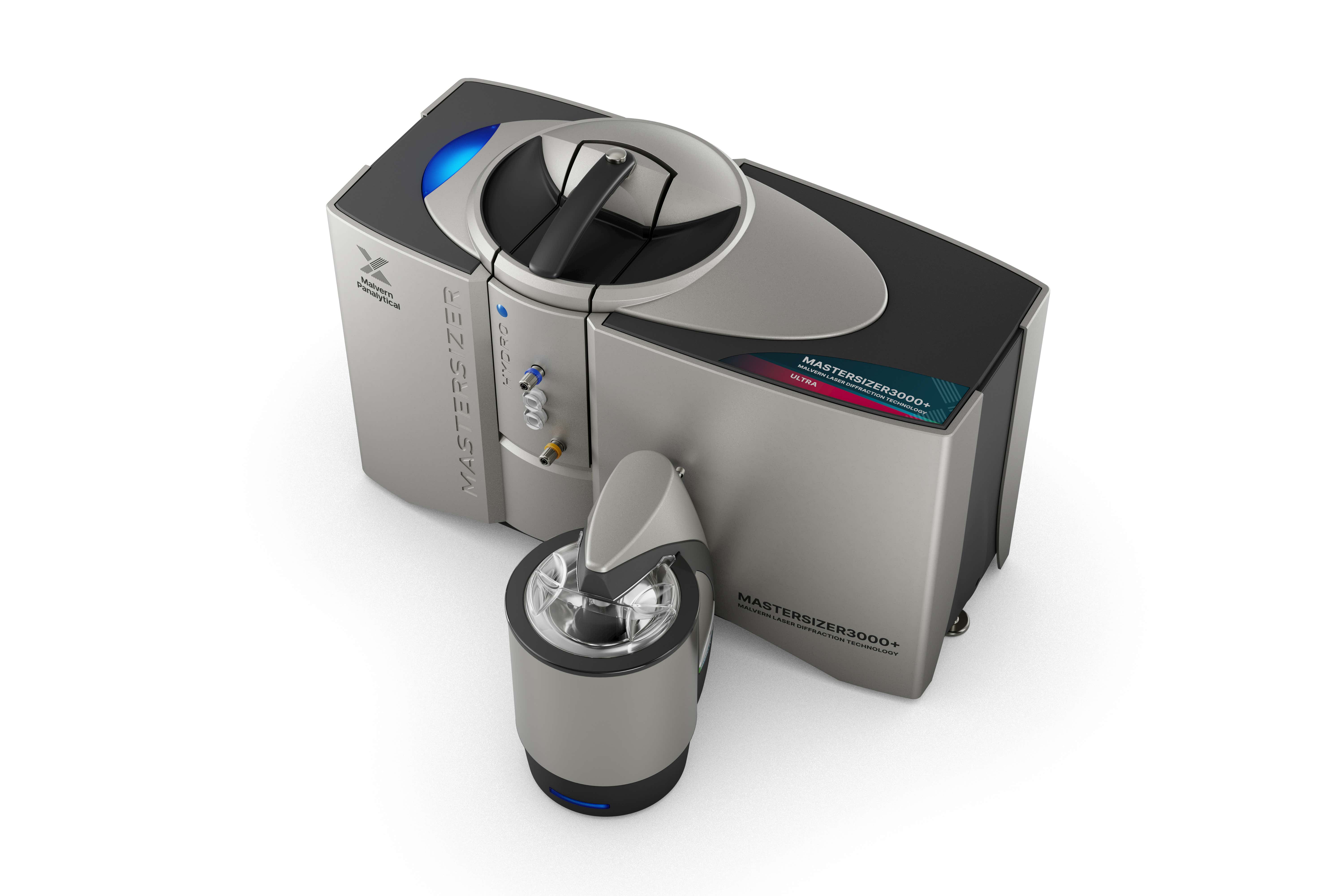
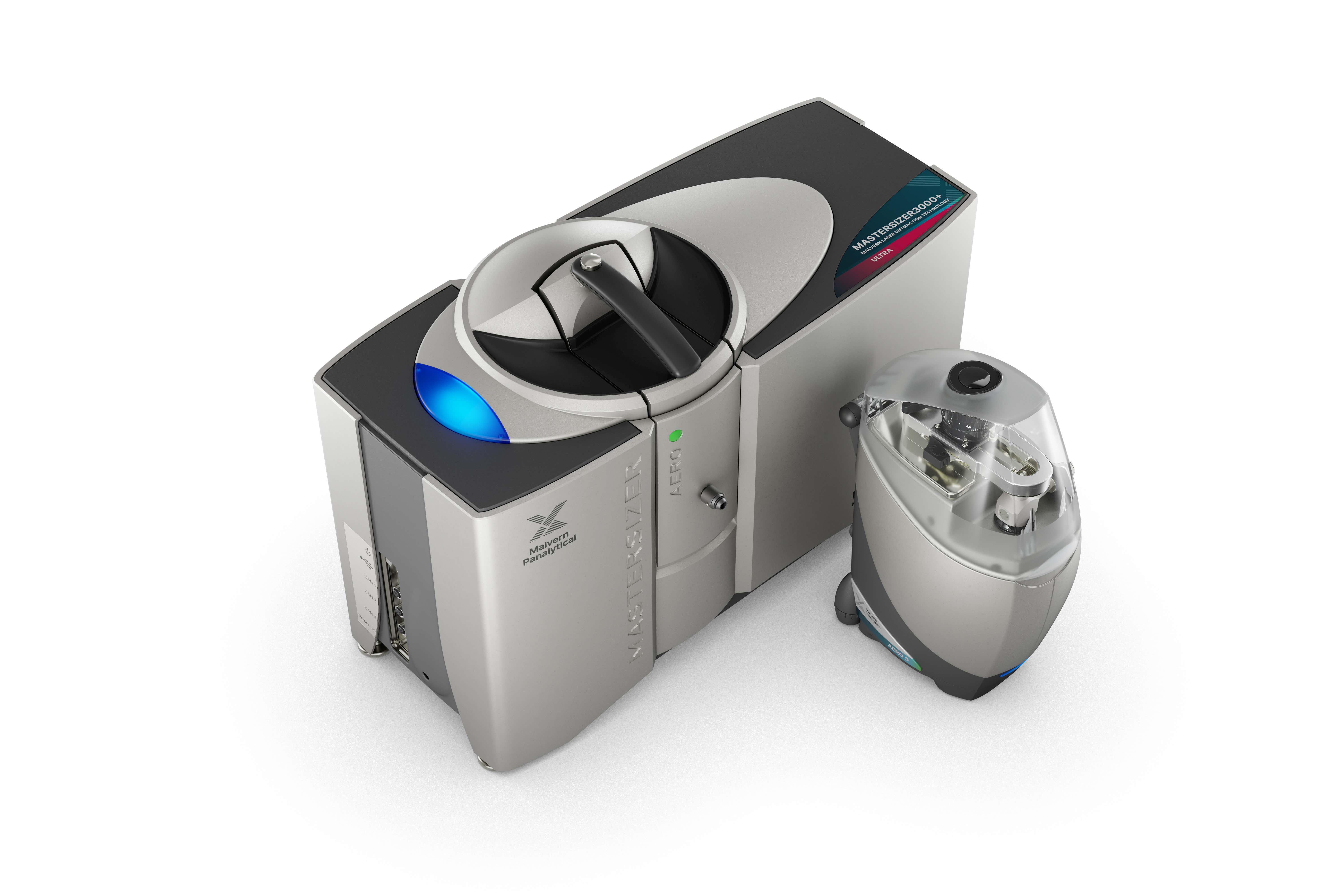



The Mastersizer 3000+ Ultra is our most advanced system for particle size and size distribution by laser diffraction. This model measures the widest size range (0.01 – 3500 um) and supports automation. The digitally enhanced Mastersizer Xplorer comes with a full set of artificial intelligence empowered workflow applications including the new Size Sure measurement mode.
Download brochureThe Mastersizer 3000+ Ultra is the future of particle size analysis.
The Mastersizer 3000+ Ultra is a versatile, compact instrument with state-of-the art software capabilities to meet the analytical and workload demands of the laboratories of present and the future. Combining expert engineering, built-in applications know-how and advanced connectivity, it offers:
Malvern Panalytical's extensive knowledge of laser diffraction particle size analysis enables the Mastersizer 3000+ Ultra to quickly and consistently deliver results you can rely on, with software solutions that empower both measurement novices and particle sizing experts alike.
The Mastersizer 3000+ Ultra uses the technique of laser diffraction to measure the particle size and particle size distribution of materials. It does this by measuring the intensity of light scattered as a laser beam passes through a dispersed particulate sample. This data is then analyzed to calculate the size of the particles that created the scattering pattern. Three main elements enable the system to consistently and reliably deliver the accurate, robust particle sizing data that is central to the effective operation of so many industrial processes.
![[Shutterstock 283307369 general-triangle-particles] shutterstock_283307369.jpg](https://dam.malvernpanalytical.com/9755395d-9db4-490c-93c3-af12000e8022/shutterstock_283307369_Original%20file.jpg)
In this three-part webinar series, we explore groundbreaking easy-to-use features from Mastersizer 3000+ that elevate your work with unparalleled precision and efficiency.
Powder flowability is important in maintaining manufacturing efficiency for many processes. Inconsistent powder flow can directly affect product quality variables such as the content uniformity of pharmaceutical dosage forms, or may lead to process variability as powder feed inconsistencies change the effectiveness of particle size reduction processes. Powder flow is a critical consideration in the manufacture of sintered products using additive manufacturing or 3D-printing techniques. Here, poor flow during powder bed deposition may lead to variations in powder bed density, resulting in defects that reduce the strength of the finished part.
Particle size and particle size distribution analysis are critical to understanding the flow properties of a powder, since these characteristics help predict how particles within the powder will pack and lock together. Powders that have a large particle size with a narrow size distribution tend to exhibit good flowability. Those with a small particle size, or a broad particle size distribution, tend towards poorer flowability because of the greater surface area of contact that exists between the particles and the ability of the fine particles present to fill the voids.
The packing density of particles influences the success of many processes, including mold-filling in ceramic and metal component production, powder coating, and the solids loading of suspensions. The way that particles pack together is a function of both their size and size distribution. Larger particles pack less efficiently than smaller ones, creating bigger voids. Broadening the particle size distribution improves packing efficiency by allowing smaller particles to pack the spaces between larger ones. Minimizing voidage is crucial to producing flaw-free sintered components. In powder coating, close packing enables efficient melting at lower temperatures, giving more time for cross-linking reactions between polymer particles for a better finish.
Particle packing also influences the rheology of suspensions, principally their viscosity. A mix of large and small particles has the least impact on the viscosity of the system because of their greater packing efficiency, a phenomenon that can be exploited to increase the solids loading of suspensions such as paints and ceramics.
The stability of suspensions and emulsions used and produced in industries such as pharmaceuticals and foods is important in ensuring product efficacy, acceptability, and success. Dispersion stability and gravitational separation are both key elements.
Dispersion stability: Achieving a stable dispersion requires control of the forces of adhesion and cohesion that exist between particles within a medium. These forces can lead to flocculation of emulsions or the creation of agglomerates within suspensions and powders. The risk of poor dispersion stability increases with decreasing particle size and can significantly impact processing. It may lead to powder conveyance issues within manufacturing processes, or problems with final product performance, such as the formation of agglomerates that give rise to imperfections in coatings and paints. Particle size and particle size distribution analysis is used in the management of dispersion stability risk and to identify the impact of stability problems on product performance and acceptance.
Gravitational separation: Improving the stability of a suspension or emulsion to gravitational separation relies on balancing the gravitational pull on the particles, a function of particle size and density, with the up-thrust of the suspending fluid, which depends on viscosity. In emulsions, particle size analysis is used to assess the likelihood of creaming, to which larger droplets are prone, and to monitor stability to flocculation and coalescence over time. Since droplet size and the degree of flocculation may also affect characteristics such as the mouthfeel of a food or the viscosity of a drink, particle size should be measured routinely when optimizing and manufacturing emulsion formulations.
The viscosity and flow of suspensions and slurries depend on different physical properties, including particle size and particle size distribution. If particle size decreases (for a constant volume fraction) and/or the size distribution increases, the sample viscosity will increase and the sample will flow less readily. Viscosity is important for many applications such as paints, cosmetics and battery manufacture. Take batteries, for example, where the battery electrodes are fabricated by applying a slurry of particles in suspension to metal foil. If the slurry is too viscous, this can lead to difficulties in the coating process.
Dissolution rates of materials are influenced by the specific surface area of the particulates. Increasing the specific surface area of particles by reducing their size accelerates the dissolution process. This correlation is especially important in pharmaceutical products, where dissolution directly impacts the bioavailability of a drug substance. Agrochemical and detergent manufacturers must also manage particle size to control the dissolution and release rates of active components within a formulation.
Ease of inhalation is an important criterion, both for preventing human inhalation of harmful particles and for optimizing drug deposition in the respiratory tract. For all orally inhaled and nasal drug products (OINDPs), particle size is a critical parameter, with clear size ranges specified for deposition and retention in the nasal cavity and for penetration to different areas of the lungs. In contrast, manufacturers of products such as cleaning materials and hairsprays must control fines to prevent inhalation, making particle size analysis essential to safety testing.
Reaction rates in solid systems are often a function of the specific surface area of the particles involved. The finer the particles, the larger their surface area to volume ratio, which promotes higher reaction rates. This is important in industries as diverse as cement, where particle size impacts the speed of hardening of cement products, and catalyst production, where particle size must be tailored to optimize reaction rates or ensure the effective scavenging of pollutants, and battery manufacture, where particle size must be controlled to balance between power density, charge times and battery durability.
Optical properties such as the light scattering ability of particles are exploited by paint, coatings and pigment manufacturers. The way a particle scatters light depends on its size, so manipulating the size of particles in a surface coating influences performance parameters such as hue and tint strength, product coverage and gloss.
Consumer perception of products such as foodstuffs is often influenced by particle size. For example, the particle size of coffee, and the extent to which it is ground, impact both the flavor released and the time required to brew. A fine particle size in chocolate gives a smooth mouthfeel, frequently perceived as superior to a grainy texture.
The curing properties of materials such as cement are affected by particle size. The curing qualities, and resultant compressive strength of cement, are increased as the particle size decreases due to the increase in surface area. Laser diffraction measures the particle size distribution, which is just as important as average size. If two cement samples have the same average size or surface area then the sample with the narrower size distribution will have a higher compressive strength.
Regulatory Compliance: Reliable and robust data that informs critical decision-making throughout R&D and manufacturing processes, which is essential for regulatory compliance.
A guide to the new ICH Q2 r 2 guidance on the validation of laser diffraction measurements
21 CFR Part 11 Compliance: Mastersizer 3000+ can assist in ensuring compliance with regulations such as 21CFR Part 11 and the equivalent rule set in Europe (Annex 11), which pertain to electronic records and electronic signatures.
Drug formulation: Precise particle size control is crucial for ensuring consistent drug delivery and effectiveness. The Mastersizer 3000+ helps measure the size and distribution of drug particles, allowing for the optimization of formulations for targeted release or improved bioavailability.
Active pharmaceutical ingredients and particle sizing during development
Deformulation: Mastersizer 3000+ can help analyze the particle size distribution of a pharmaceutical dosage form, which is a key piece of information in understanding the formulation and potentially developing bioequivalent generics.
Excipient characterization: Pharmaceutical formulations often include excipients, inactive ingredients that play a functional role. The Mastersizer 3000+ assists in characterizing the size and size distribution of excipients, which can impact factors like tableting, stability, and drug delivery.
Troubleshooting manufacturing issues: Unexpected changes in particle size can indicate problems during production. The Mastersizer 3000+ can be used to diagnose these issues and identify potential solutions.
Inhalation drug development: Particle size is especially important for inhalation drugs, as it affects lung deposition and therapeutic efficacy. The Mastersizer 3000+ plays a role in ensuring particles are within the desired size range for optimal inhalation delivery.
Powder flow analysis: The flow properties of pharmaceutical powders are critical during manufacturing and handling. The Mastersizer 3000+ helps determine particle size distribution, which can influence powder flowability and ease of processing.
Quality control: Maintaining consistent particle size throughout the production process is essential for pharmaceutical quality control. The Mastersizer 3000+ provides a rapid and reliable method for measuring particle size distribution, ensuring batches meet quality specifications.
Top tips for successful particle size analysis: methods and measurements
Capsule filling: Particle size can impact how easily a powder fills capsules uniformly and efficiently. The Mastersizer 3000+ helps ensure consistent particle size for optimal capsule filling processes.
Stability studies: Changes in particle size over time can affect a drug's stability and effectiveness. The Mastersizer 3000+ allows for monitoring particle size during stability studies to identify potential formulation issues.
Dosage form optimization: Beyond capsules, the Mastersizer 3000+ can help optimize particle size for various dosage forms like tablets, ointments, and suspensions. Matching particle size to the desired release profile or targeted delivery site can improve drug efficacy.
Preclinical research: Particle size can influence the absorption and distribution of drugs in preclinical studies. The Mastersizer 3000+ can be used to ensure consistent particle size for reliable in vitro and in vivo testing.
Micronization analysis: Micronization is a process that reduces particle size. The Mastersizer 3000+ can be used to analyze the effectiveness of micronization techniques in achieving the desired particle size for specific pharmaceutical applications.
Batteries : Performance of batteries relies heavily on the precise control over the particle size distribution of electrode materials. Mastersizer 3000+ helps ensure these particles are the ideal size for efficient charge storage and power delivery. With Size Sure , it is also possible to detect agglomerates and oversized ghost particles.
Semiconductors : In the creation of microchips and other electronic components, particle size plays a crucial role in electrical conductivity and performance. The Mastersizer 3000+ allows manufacturers to precisely measure and control particle size for consistent and high-quality semiconductors.
Catalysis : Catalysts are materials that accelerate chemical reactions. Their effectiveness often depends on the size and surface area of their particles. The Mastersizer 3000+ helps optimize catalyst performance by providing data on particle size distribution, leading to more efficient and targeted chemical processes.
Coatings and Films : Many advanced coatings and films rely on a specific particle size distribution to achieve desired properties like strength, transparency, or conductivity. The Mastersizer 3000+ helps ensure these coatings and films have the ideal particle characteristics for their intended function.
Powders for 3D Printing : Consistent particle size is essential for good flow and printability of 3D printing powders. The instrument allows manufacturers to ensure their powders meet the necessary particle size specifications.
Powder Metallurgy : Understanding the relationship between particle size and metal properties is essential in powder metallurgy. The Mastersizer 3000+ helps by analyzing the size distribution of metal and ceramic powders, which can influence factors like strength, ductility, and sintering behavior.
Metal Powders for Coatings & Paints : Particle size significantly impacts the application properties of metal powders used in coatings and paints. The Mastersizer 3000+ plays a role by measuring the size distribution, ensuring the powder offers the desired aesthetics, coverage, and functionality in the final coating.
| Particle size | Suspensions, emulsions, dry powders |
|---|---|
| Principle | Laser light scattering |
| Analysis | Mie and Fraunhofer scattering |
| Data acquisition rate | 10 kHz |
| Typical measurement time | <10 sec |
| Dimensions (W, D, H) | 690mm x 300mm x 450mm |
| Weight | 30 kg |
| Red light source | Max. 4mW He-Ne, 632.8nm |
|---|---|
| Blue light source | Max. 10mW LED, 470nm |
| Lens arrangement | Reverse Fourier (convergent beam) |
| Effective focal length | 300mm |
| Arrangement | Log-spaced array |
|---|---|
| Angular range | 0.015 - 144 degrees |
| Alignment | Automatic |
| Particle size | 0.01 - 3500 µm * |
|---|---|
| Number of size classes | 100 (user adjustable) |
| Accuracy | Better than 0.6% ** |
| Precision / Repeatability | Better than 0.5% variation * |
| Reproducibility | Better than 1% variation * |
| 21 CFR Part 11 | Enables an operating mode that assists with ER/ES compliance |
|---|
| Laser safety | Class 1, IEC60825-1:2007 and CFR Chapter I: Sub-chapterJ: Part 1040 (CDRH) |
|---|---|
| Regulatory testing | RoHS and WEEE compliant CE / FCC compliant Meets requirements of the European Low Voltage directive |
| Power | 100/240 v, 50/60 Hz 50W (no dispersion units connected) 200W maximum (2 dispersion units connected) |
|---|---|
| Humidity | 80% maximum for temperatures up to 31°C, decreasing linearly to 50% at 40°C. Non condensing. |
| Operating temperature (°C) | +5°C to +40°C |
| Product storage temperature | -20°C to +50°C |
| Patents | The Mastersizer optical bench is protected by patents based on applications WO2013038161, WO2013038160 and WO2013038159. |
|---|
Configure the Mastersizer 3000+ Ultra for your application and requirements with our range of configuration options below:
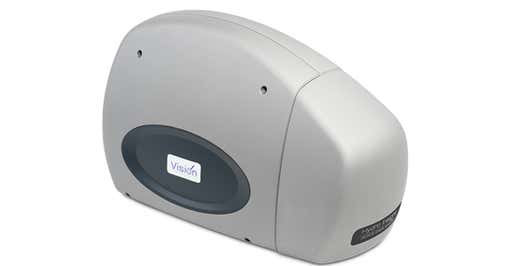
The Hydro Insight is a dynamic imaging accessory that sits alongside the Mastersizer 3000+, providing insights that go beyond particle size distribution to particle images and quantitative particle shape data.
In this way, it helps scientists, researchers, and quality-control managers understand their materials better, develop methods faster, and simplify troubleshooting.

The Hydro SV is a simple, cost effective liquid dispersion unit designed to enable particle size analysis using small volumes of sample and dispersant.

The Hydro MV is a medium volume unit for the controlled, automated wet dispersion of samples for particle size analysis. Suitable for both aqueous and non-aqueous applications, it is especially useful when sample size is limited and/or dispersant use must be minimized.

The Hydro LV is an automated large volume unit that controls wet dispersion of materials for particle size analysis. It is especially suitable for applications where the sample size is relatively large or the size distribution is very broad.

A unique dip-in wet sample dispersion unit that can be used with standard laboratory glassware. Suitable for a wide variety of dispersant volumes and particle size ranges.

The Hydro SM is a cost effective wet sample dispersion unit designed for measuring samples in non-aqueous dispersants where solvent usage needs to be minimized.

The goal of chocolate production is to produce a product with a consistent taste and mouthfeel in an economical and efficient way. Control of the cocoa and milk solids particle size and particle size distribution is critical to achieving this objective. The Mastersizer 3000+ Chocosizer is designed to support chocolate production and quality control by providing a simple method for fast, reliable chocolate particle size analysis.

The Aero S is a dry powder disperser developed using state-of-the-art powder dispersion understanding. Modular in design, it is easily configured for different applications, delivering efficient sample dispersion for both robust and fragile materials.

The Aero funnel sample feeder is designed to help users achieve rapid, reproducible bulk dry powder particle size measurements by allowing samples to be added directly to the Aero S and Aero M dry powder dispersion units without opening the dispersion unit lid. This speeds up and simplifies the process of introducing samples for analysis, decreasing the time required to obtain results.

Data Quality Guidance is a software add-on that flags possible data quality issues, and provides a list of causes and solutions at all stages of your measurement.

SOP Architect is your intelligent assistant that helps you create the best wet dispersion methods for any sample with ease and confidence.

Using Malvern Panalytical's patent pending technology of Adaptive Diffraction to differentiate and displaying data from tinterfering outside influences separately, you can more quickly generate reliable data for your sample with less time spent on troubleshooting.
Unleash the potential of your data
Until now, instrument data has too often been stuck in manual records, spreadsheets or site-specific servers. By connecting your Mastersizer 3000+ to our Smart Manager and continually analyzing instrument data in the cloud, you can unleash its full potential. This is just one of our digital solutions that are part of Malvern Panalytical's Smart Manager.
Get your new Mastersizer 3000+ up and running faster when you choose to smart install.
With comprehensive resources to help you quickly and safely set-up and verify the performance of your new instrument, there’s no need to wait for an engineer to do it for you. What’s more, smart install presents a new training opportunity as you receive full access to exclusive training material.
How does it work?
When you follow the step-by-step video instructions, you could be up and running within 90 minutes of delivery of your new Mastersizer 3000+.
You don't need any specific skills or knowledge to perform a smart installation. Simply follow the instructions provided.
Everything needed to get started is provided with your new instrument – all you need is an internet connection to access the online training.
Exclusive e-learning content
Resources to get you up and running quickly and with confidence include:
Protect your investment and ensure optimized performance at all times with Malvern Panalytical's service plans.
When you purchase a Malvern Panalytical product we understand that this is just the first stage of a working relationship that will last for the lifetime of the instrument. Depending on your needs, Malvern Panalytical will provide the support for your business.
For laboratories where maximizing instrument up-time is critical to its daily performance. Our highest level of response and the 'all inclusive' price plan takes care of those unexpected repair bills should the unfortunate occur.
Enhance your laboratory productivity by maintaining instrument efficiency. Still receive that priority response, combined with specialist technical and software support, we'll keep your instrument performance on track to deliver.
For laboratories looking to optimize instrument performance, regular preventative maintenance is essential.
| Platinum Plan | Gold Plan | Bronze Visit | |
|---|---|---|---|
| Annual PM/PV Test |
yes
|
yes
|
no
|
| Telephone / Email Support |
yes
|
yes
|
no
|
| Priority Response |
yes
|
yes
|
no
|
| Emergency Breakdown visits* |
yes
|
yes
|
no
|
| Parts Included |
yes
|
no
|
no
|
| Technical & Software Support |
yes
|
yes
|
yes
|
| IQ/OQ (Pharma)*** |
yes
|
yes
|
yes
|
*including labour & travel costs ***available at an additional cost
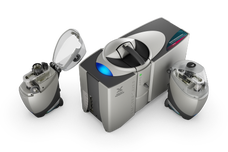
Trusted the world over to deliver robust, reliable data, customized to meet your needs, all wrapped up in a user-friendly package. No wonder it’s the world’s favorite.